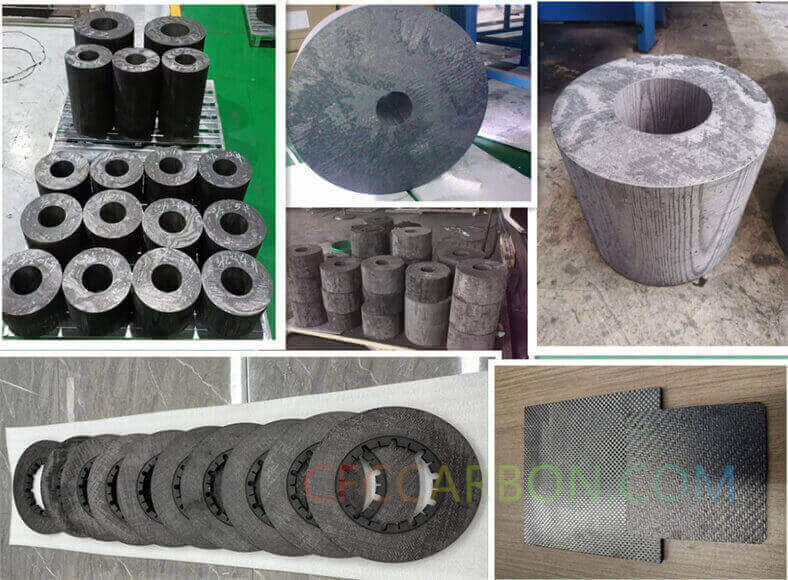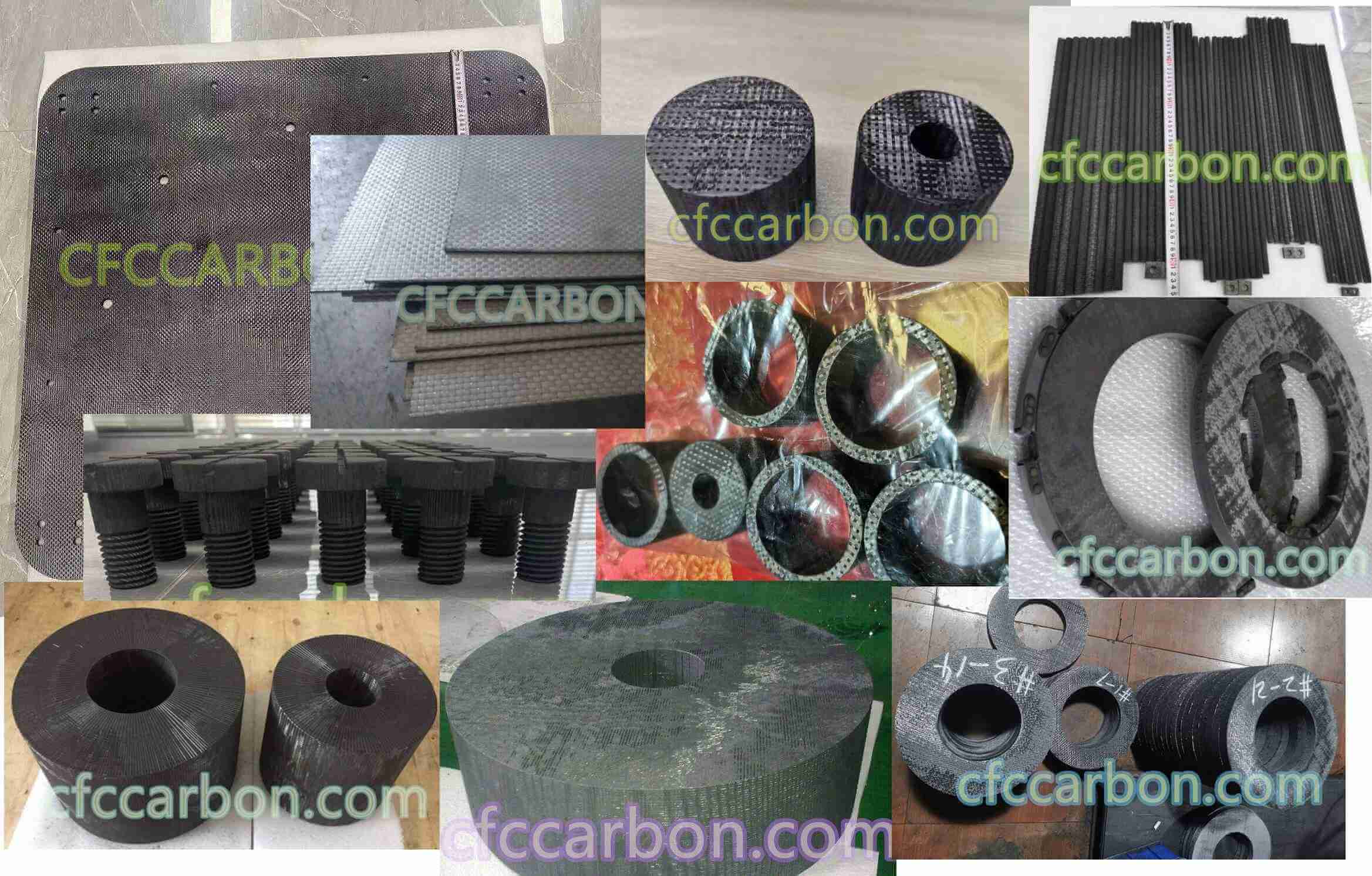The results obtained from weight change versus time measurements during the oxidation of uninhibited and inhibited carbon-carbon composites in dry oxygen at temperatures over the interval between 800 and 1300C are presented in the tests. In these tests, both types of composites lose weight during oxidation but the weight losses are usually less for the inhibited samples. The weight change curves for both

3D 4D carbon fiber composite material manufacturer factory -airplane brake disc plates sheets U L profiles-2D(s)
types of composites exhibit initial regions where the rates are increasing with time. This stage at T>800C occurred because a few minutes elapsed before the specimens reached the temperature of the furnace.
A thermocouple was placed within a specimen and the time to uniformly heat this specimen to the furnace temperature was the same at the time over which the initial stage was observed. The initial stage at lower temperatures may be the result of inhibitors or oxidation of the CVD carbon layer in addition to transients in temperature. The oxidation kinetics for both types of composites exhibit a linear second stage. These rates are linear as a result of the oxidation of carbon to CO and CO2. Only the inhibited composites exhibited a third stage over which the rates decreased with time. This region was caused by the oxidation of boron in the composite.
In the linear second stage region the rate constants were affected by temperature, gas flow rate and specimen size. The effects of gas flow rate and specimen size became more pronounced at the temperature was increased. Higher rates are obtained for the higher flow rates. The oxidation rates are affected by gas flow rates, because the supply of oxygen to the surface can’t keep up with the rapid surface reactions. Depletion of oxygen at the surface causes a boundary layer to form. The thickness of the boundary layer is dependent on the gas flow rate. Large specimens deplete the oxygen supply at the leading edge. Oxygen depletion causes a larger boundary layer to form resulting in slower oxidation rates.
At temperatures below about 600C these constants obey an Arrhenius relationship with an activation energy of about 43 Kcal/mole. In this temperature range, the rate constants are not affected by specimen size or gas flow rate. The rate controlling process must involve the adsorption, dissociation, and desorption of oxygen, CO, and CO2. A large difference between rate constants obtained for uninhibited and

carbon fiber composite material manufacturer in China(1)
inhibited CC composite was not evident.
At temperatures between about 600-800C, the linear rate constants are influenced by flow rate and specimen size, but the activation energy is higher than that for gaseous diffusion. In this region the rate is determined by a coupling of the phase boundary chemical reactions and diffusion in the boundary layer.
The experimentally measured CO2 was less than 100% of what is calculated for the observed weight loss. This indicates that the ascarite did not absorb all the carbon that was reacted. This would occur if the carbon was in the form of CO (g). Another reason for low carbon pick up is streaming of the gas through the adsorption chamber. This is supported by the smaller observed amount of carbon absorbed per unit time in ascarite with a faster flow of oxidant.
related news /articles:
Basic properties of uncoated carbon-carbon composite material
Gas phase infiltration of carbon carbon composites-CFCCARBON LTD
Catalytic oxidation of carbon-carbon composite aircraft brakes (2)
Methods of processing carbon-carbon matrix materials (2)- CVI processes